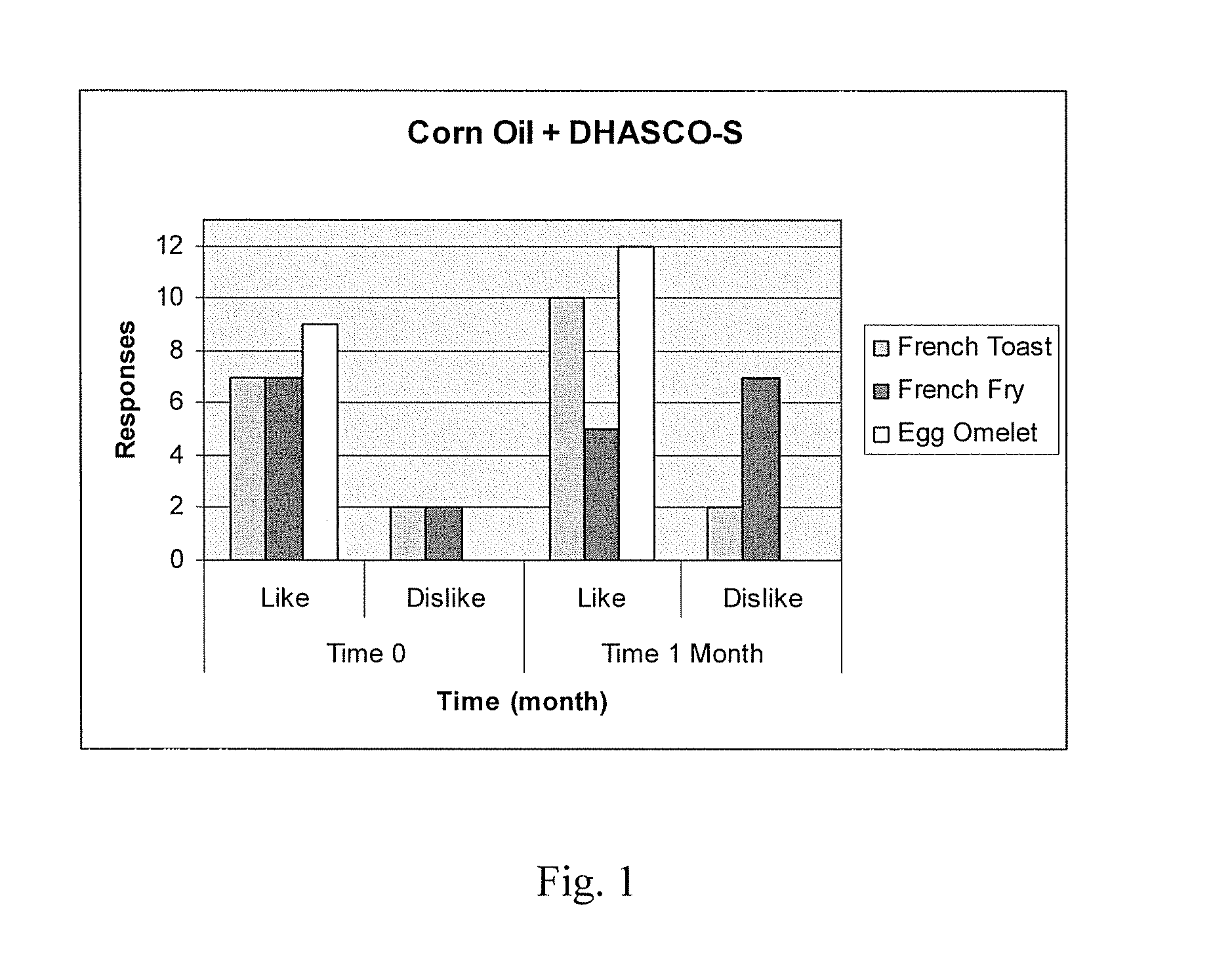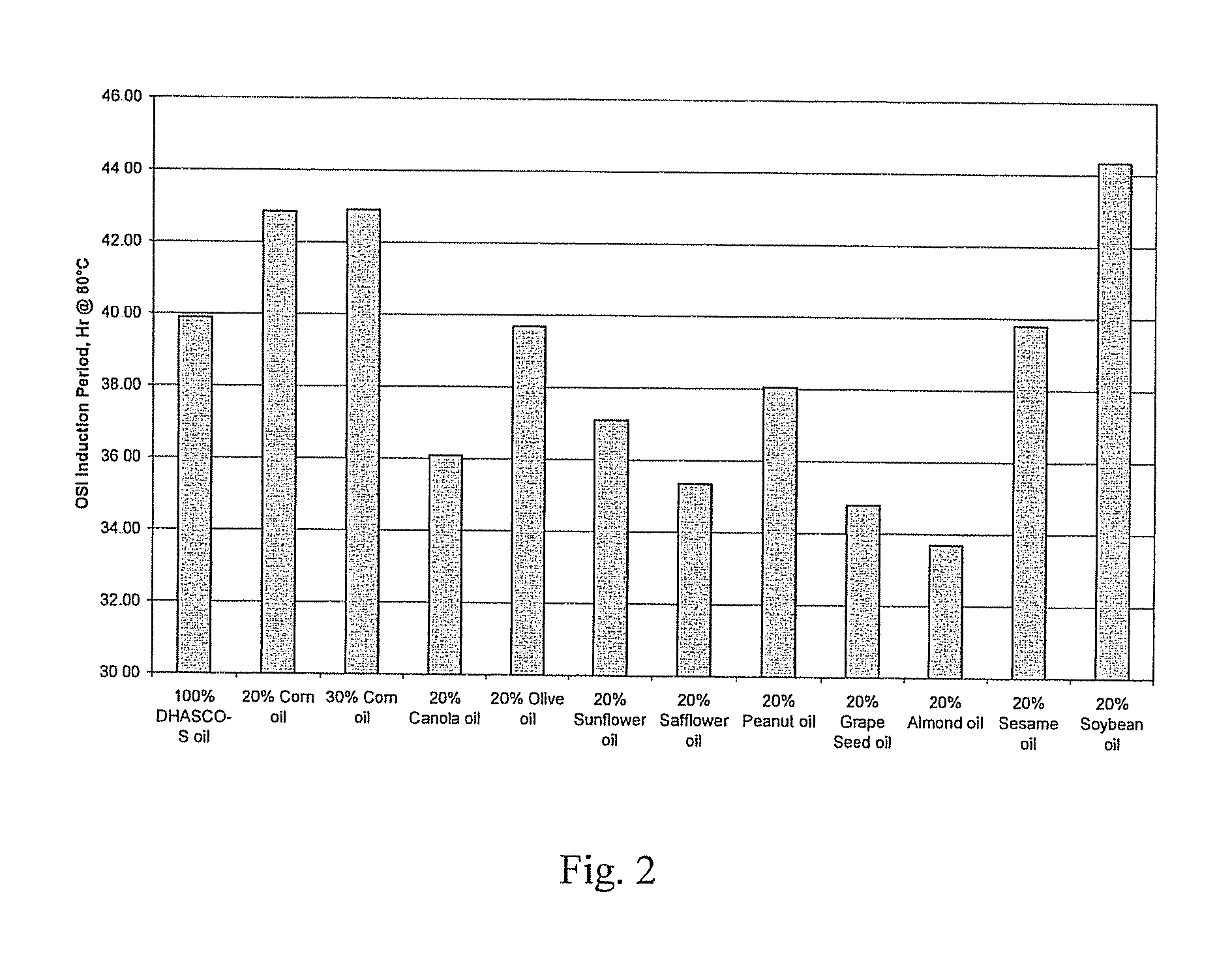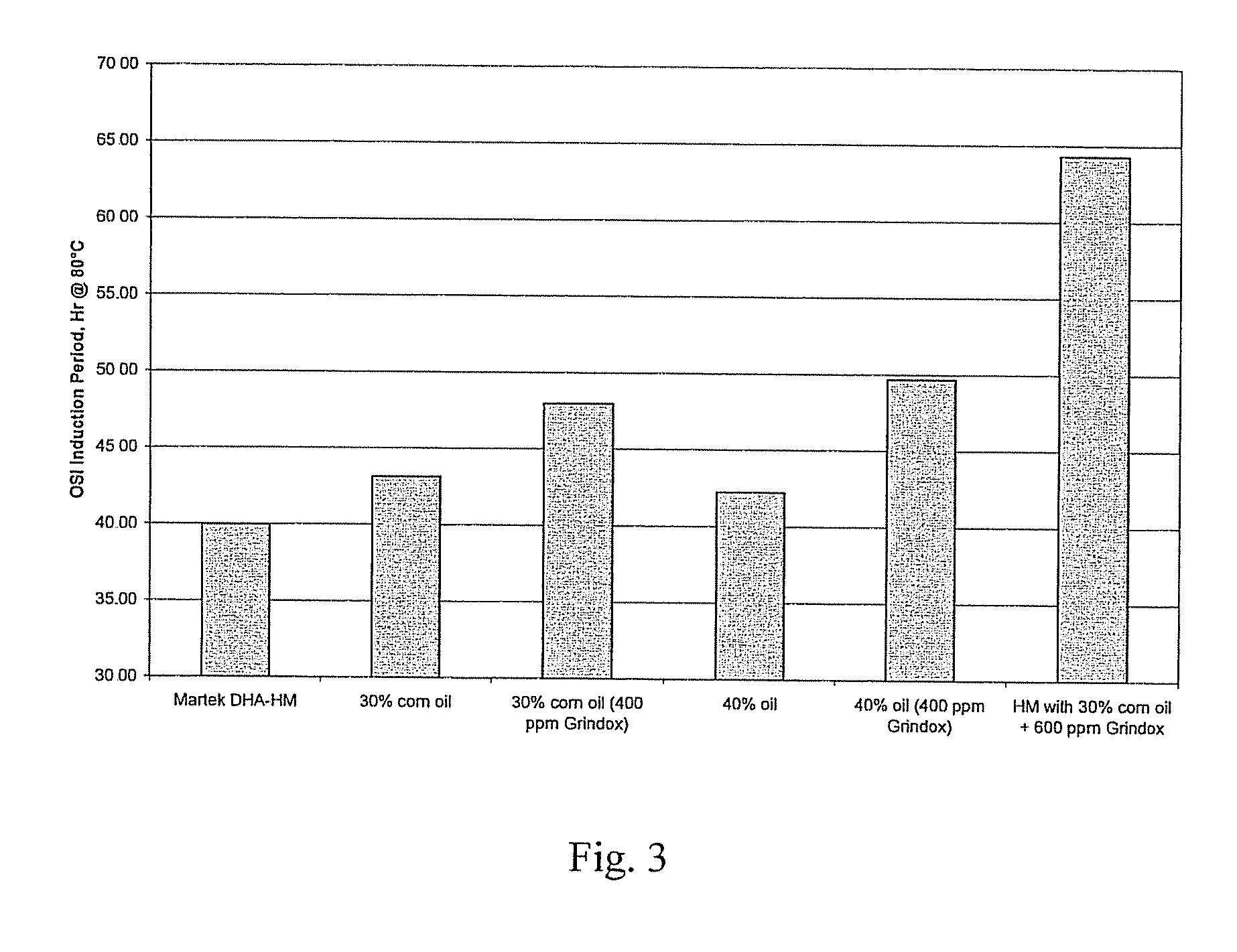Food Products Comprising Long Chain Polyunsaturated Fatty Acids and Methods for Preparing the Same
a technology of polyunsaturated fatty acids and food products, which is applied in the field of food oil compositions, food products comprising omega6 long chain polyunsaturated fatty acids, which can solve the problems of diet creating serious imbalance, body can convert shorter chain fatty acids to lc, and low efficiency of ara
- Summary
- Abstract
- Description
- Claims
- Application Information
AI Technical Summary
Benefits of technology
Problems solved by technology
Method used
Image
Examples
example 1
[0066] The example illustrates an embodiment of the present invention in which a blend of oils is used for frying various foods.
[0067] 800 g of a blend of oils was prepared by mixing 799.2 g of commercially available corn oil with 0.8 g of DHASCO®-S oil (Martek Biosciences Corporation, Columbia, Md.). DHASCO®-S comprises approximately 35% by weight DHA, resulting in an omega-3 content of about 0.035%. Fried potatoes (French fried style), omelets and fried French toast were prepared using this oil blend and tested for consumer acceptability by a consumer panel of nine or twelve people. The oil blend was stored for one month at room temperature and then was re-tested preparing the same foods as before. The results of the consumer testing are shown in FIG. 1. The amount of DHA per serving of food product, as well as the oil before and after deep frying, was analyzed and is shown below in Table 1.
TABLE 1DHASamplemg / servingFrench fry4.6(100 g serving)French toast10.9(50 g serving)Egg5...
example 2
[0069] This example examines the effect on the oxidative stability of an oil containing an omega-3 LC PUFA of blending a vegetable oil containing substantially no omega-3 LC PUFA and substantially no omega-6 LC PUFA.
[0070] An oil containing about 35% by weight DHA (DHASCO®-S, Martek Biosciences Corporation, Columbia, Md.) was diluted with 20% of various vegetable oils and 30% corn oil as shown in FIG. 2. The DHASCO®-S oil and the blended oils were tested for the time to the OSI induction period, measured in hours. The oils were kept at 80° C. with air bubbled through and evaluated for the time until the oil begins to oxidize.
[0071] The results of this testing are shown in FIG. 2 in which it is shown that at 20% corn oil and soybean oil and 30% corn oil, an increase in the OSI induction period was achieved.
example 3
[0072] This example examines the effect on the oxidative stability of an oil containing an omega-3 LC PUFA of blending corn oil, with and without added antioxidants.
[0073] An oil containing about 32% by weight DHA (DHA-HM, Martek Biosciences Corporation, Columbia, Md.) was diluted with 30% or 40% of corn oil, with and without the addition of 400 ppm or 600 ppm of an antioxidant blend of ascorbyl palmitate and tocopherols (Grindox™, Danisco) as shown in FIG. 3. The DHA-HM oil and the corn oil blends were tested for the time to the OSI induction period, measured in hours. The oils were kept at 80° C. with air bubbled through and evaluated for the time until the oil begins to oxidize.
[0074] The results of this testing are shown in FIG. 3 in which it is shown that all of the corn oil blends, with and without antioxidant increased the OSI induction period.
PUM
 Login to View More
Login to View More Abstract
Description
Claims
Application Information
 Login to View More
Login to View More - R&D
- Intellectual Property
- Life Sciences
- Materials
- Tech Scout
- Unparalleled Data Quality
- Higher Quality Content
- 60% Fewer Hallucinations
Browse by: Latest US Patents, China's latest patents, Technical Efficacy Thesaurus, Application Domain, Technology Topic, Popular Technical Reports.
© 2025 PatSnap. All rights reserved.Legal|Privacy policy|Modern Slavery Act Transparency Statement|Sitemap|About US| Contact US: help@patsnap.com



